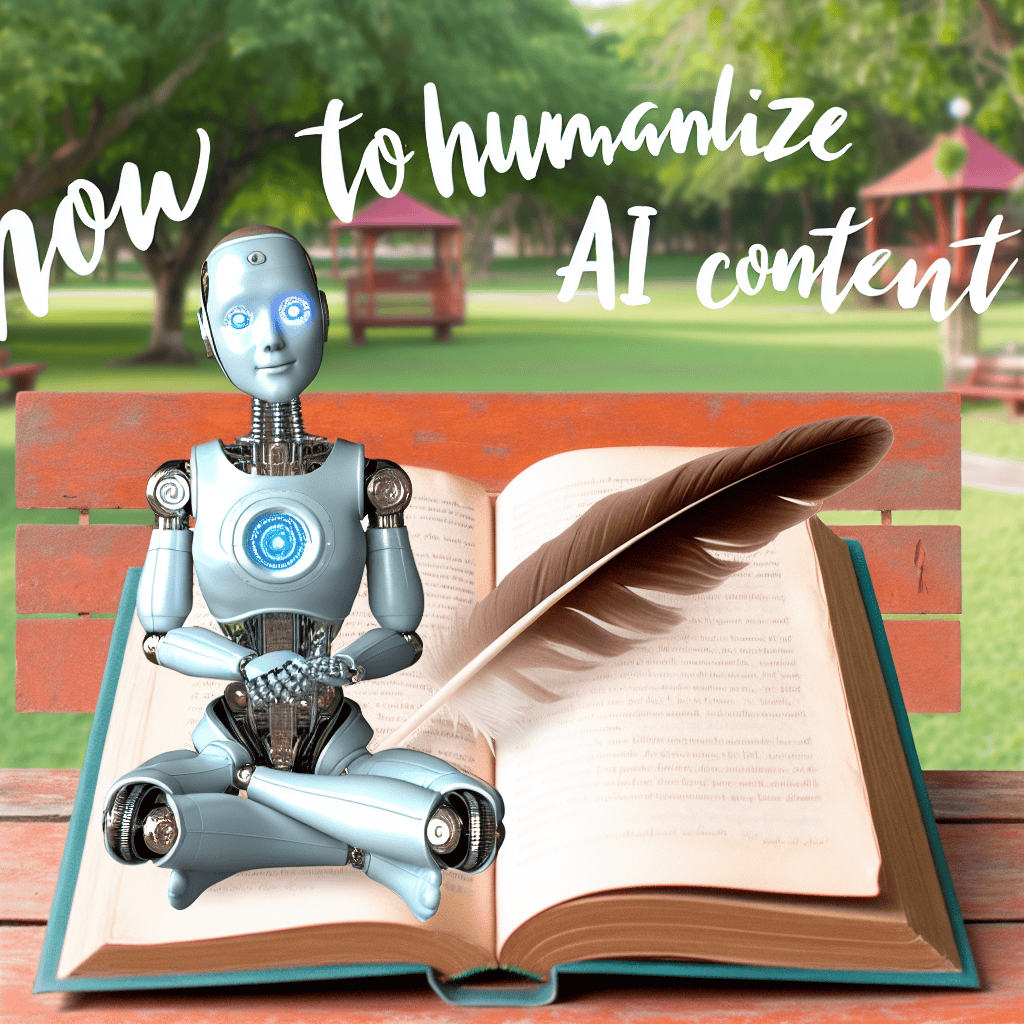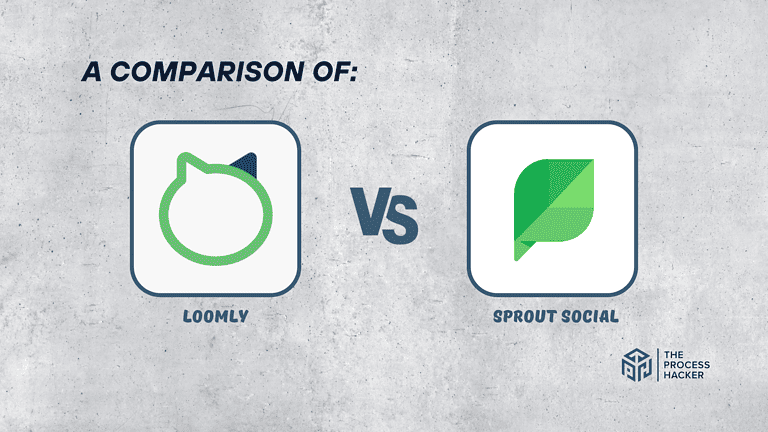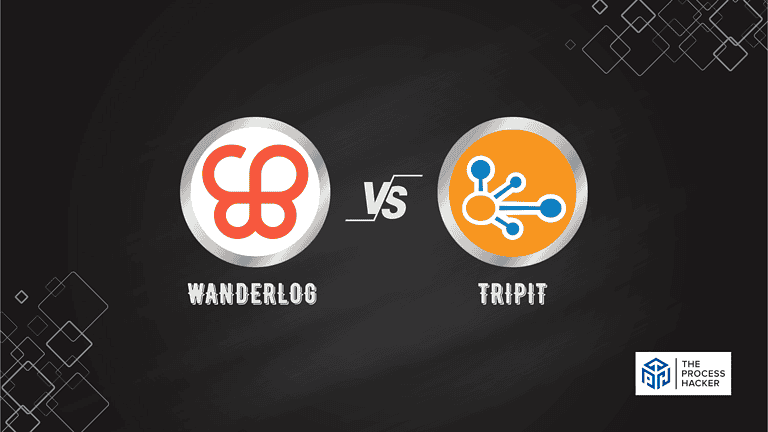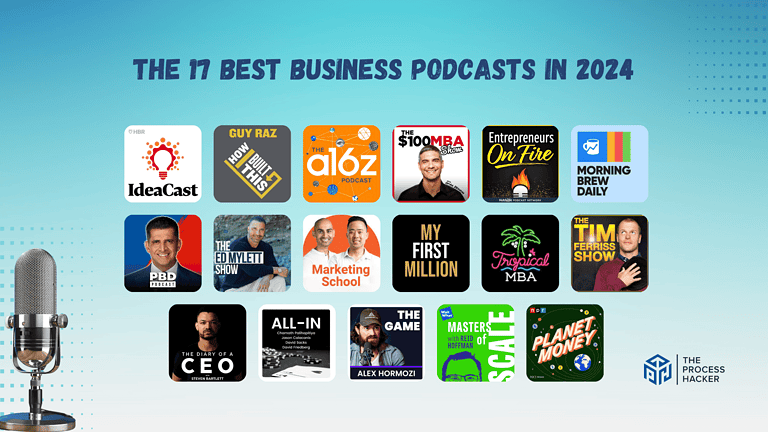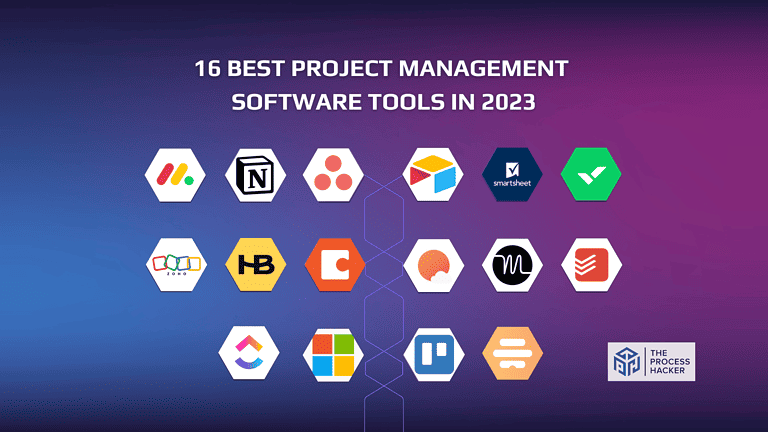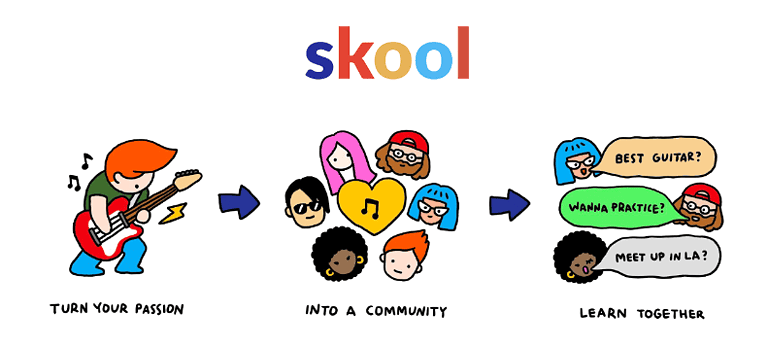How to Humanize AI Content: A Game-Changing Guide for Entrepreneurs
Artificial intelligence (AI) has emerged as a powerful tool for content creation, but it’s important to remember that your audience craves authenticity and a human touch. If you’re ready to take your content to the next level and forge genuine connections with your readers, this guide is for you.
Gone are the days of robotic, impersonal content that leaves your audience feeling disconnected. By embracing the art of humanizing AI, you’ll cultivate a loyal following that trusts your brand and eagerly anticipates your next message.
Whether you’re a seasoned entrepreneur or just starting your journey, this guide will empower you to harness the full potential of AI while maintaining the authenticity that sets your brand apart.
What Does It Mean to Humanize AI Generated-Content?
Humanizing AI content means taking that raw, machine-generated text and infusing it with personality, warmth, and relatability. It’s about transforming cold, clinical language into something that sparks a connection, elicits emotion and leaves a lasting impression.
In a world where AI is becoming increasingly prevalent, maintaining a human touch in your writing is paramount. People crave authenticity. They want to feel like they’re interacting with a real person, not a machine. Humanized content bridges that gap, fostering trust and engagement.
However, it’s important to strike a balance between efficiency and authenticity. AI can undoubtedly streamline your content creation process, but it shouldn’t come at the expense of genuine human connection.
By mastering the art of humanizing AI-generated text, you can leverage the best of both worlds, producing high-quality content at scale without sacrificing the warmth and personality that resonates with your audience.
Why You Should Know How to Humanize AI Content
From maintaining a brand’s authentic voice to enhancing reader engagement and SEO performance, the advantages are manifold. Let’s explore some specific strategies and insights that can help you transform your AI-generated content into compelling, human-centric communications.
The Rise of AI Content Detection Tools
As AI content generation becomes more sophisticated, so do the tools designed to detect it. Search engines and platforms are constantly evolving their algorithms to prioritize authentic, human-created content. By learning to humanize your AI-generated text, you ensure that your content not only resonates with your audience but also flies under the radar of these detection tools.
Maintain Brand Voice and Authenticity
Your brand has a unique personality, a distinct voice that sets you apart from the competition. Humanizing AI content allows you to infuse that voice into every piece you create, ensuring consistency and authenticity across all your communication channels.
Improve Engagement and Conversions
People connect with stories, emotions, and relatable experiences. Humanized content sparks those connections, keeping your audience engaged and encouraging them to take action. Whether they sign up for your newsletter, make a purchase, or share your content, humanized AI text drives conversions.
Enhanced Readability and Relatability
Let’s face it, no one enjoys reading dry, robotic text. Humanized content is fluid, engaging, and easy to digest. It speaks directly to your audience, making complex topics accessible and fostering a sense of connection.
Improve SEO Performance and Pass AI Detectors
Search engines favor content that provides value to users. By crafting humanized AI content that passes AI detectors and is informative, engaging, and relevant to your target audience, you boost your chances of ranking higher in search results and attracting organic traffic.
Maintain a Competitive Edge in Content Creation
In a world where AI-generated content is becoming the norm, the ability to humanize it gives you a distinct advantage. By producing high-quality and authentic content, you position yourself as a leader in your industry and stand out from the crowd.
How to Humanize AI Content
Now that we understand the ‘why’ behind humanizing AI content let’s dive into the ‘how.’ Consider this your toolkit, equipped with actionable strategies to transform your AI-generated text into something truly remarkable.
1) Optimize Your AI Prompts
The foundation of humanized AI content lies in the prompts you provide. Think of them as the blueprints for your AI’s creations. By crafting clear, specific, and detailed prompts, you guide the AI toward generating text that aligns with your vision.
The first and most important step is to craft a specific and detailed prompt. Avoid vague or generic instructions. Instead, provide the AI with context, desired tone, and specific elements you want to include in the output. The more information you provide, the better equipped the AI is to generate content that meets your expectations.
Don’t forget to incorporate your brand voice and style guidelines. Your brand has a unique personality. Make sure your AI understands it. Include guidelines on tone, language, and stylistic preferences in your prompts. This ensures that the generated content seamlessly integrates with your existing brand identity.
The last thing you need to do to optimize your AI prompt is to provide the AI with relevant background information about your target audience, industry, and the specific purpose of the content. This helps the AI generate text that is not only well-written but also contextually relevant and engaging.
2) Infuse Personal Experiences
Numbers and data can be powerful, but it’s the human element that truly resonates. By weaving personal experiences into your AI-generated content, you create a sense of authenticity and connection that’s hard to replicate. These are some of the things that can make your content pass the AI detector test.
Share stories from your own entrepreneurial journey or highlight success stories from your customers. These real-world examples add depth and credibility to your content, demonstrating the practical application of your ideas.
You’re an expert in your field. Share your knowledge and unique perspective by incorporating industry-specific insights into your AI-generated content. This positions you as a thought leader and adds value for your audience.
Statistics and data can be persuasive, but don’t let them overshadow the human element. Use real-world examples to illustrate your points and make the information more relatable and impactful. Remember, it’s the stories that stick with people long after they’ve finished reading.
3) Employ Emotional Language
Words have the power to evoke emotions, and emotions drive action. By incorporating emotional language into your AI-generated content, you create a deeper connection with your audience and inspire them to take the next step.
Leverage sentiment analysis tools to gauge the emotional tone of your AI-generated text. This helps you identify areas where you can inject more personality, warmth, or excitement.
Certain words and phrases have a proven track record of eliciting specific emotions. Use these emotional triggers and power words strategically to create a desired impact and resonate with your audience on a deeper level.
The tone of your writing should align with the purpose of your content and the expectations of your target audience. Whether you’re aiming for a lighthearted, inspirational, or authoritative tone, ensure consistency throughout your AI-generated text.
4) Incorporate Human-Like Quirks
Perfect can be boring. By adding a touch of imperfection to your AI-generated content, you make it more relatable and human.
Sprinkle in some everyday language, regional expressions, or pop culture references that resonate with your audience. This adds personality and a touch of familiarity to your writing.
Monotony is the enemy of engagement. Break up long sentences and paragraphs with shorter ones. Vary your sentence structures to create a natural flow and rhythm that mimics human speech patterns.
Engage your audience by asking thought-provoking questions or addressing them directly. This creates a sense of dialogue and encourages them to actively participate in the reading experience.
5) Blend AI and Human Writing
The most successful AI content strategies leverage the strengths of both machine and human intelligence. It’s about finding the sweet spot where AI streamlines the process and human creativity adds the finishing touches.
AI-generated content is a great starting point, but it often requires a human touch to refine and polish. Post-editing involves reviewing the AI output, correcting errors, adjusting tone, and adding those nuanced details that only a human can provide.
Embrace the concept of co-creation. Let AI handle the heavy lifting of generating initial drafts while you focus on adding your unique voice, expertise, and creative flair. This collaborative approach maximizes efficiency and ensures the final product is both informative and engaging.
Whether you’re working with AI or human writers, consistency is key. Establish clear guidelines for voice, tone, and style, and ensure everyone involved in the content creation process adheres to them. This creates a cohesive brand identity, and fosters trust with your audience.
Use Advanced AI Humanizer Tools
As technology advances, so do the tools available to help you in your quest for humanized AI content. Innovative AI humanizer tools are emerging, specifically designed to bridge the gap between machine-generated text and authentic human expression. These tools act as your virtual writing assistants, helping you refine and polish your AI-generated content to perfection.
Top AI Humanizer Tools for AI to Human Text
Here’s a glimpse into some of the top contenders:
QuillBot
This versatile humanize AI text tool offers a range of features, including paraphrasing, grammar checking, and summarization, to help you refine your AI-generated content and make it more human-like. Its paraphrasing capabilities can reword sentences and phrases, making them sound less robotic and more natural.
Additionally, the grammar and spelling checker ensures your content is error-free, enhancing its professionalism. The summarization feature helps you condense lengthy AI-generated text into concise and impactful summaries, perfect for social media posts or quick overviews.
Wordtune
Wordtune focuses on enhancing clarity and readability, suggesting alternative phrasing and sentence structures to improve the flow and naturalness of your AI-generated text. It helps you avoid awkward or repetitive phrasing, ensuring your content is engaging and easy to understand.
With its focus on clarity, Wordtune is particularly useful for crafting persuasive marketing copy or educational content. Its user-friendly interface allows for easy navigation and quick editing, making it a must-have tool for anyone looking to improve their writing skills.
Grammarly
While primarily known as a grammar and spelling checker, Grammarly also offers style suggestions and tone detection, helping you ensure your AI content aligns with your desired voice and audience. It can identify instances where your tone might be too formal or casual and suggest alternatives to achieve the perfect balance.
Grammarly’s style suggestions can also help you refine your writing style, making it more concise, engaging, and impactful. With its advanced AI technology, Grammarly can analyze your content and suggest improving sentence structure and word choice.
Originality.AI
This human text converter not only helps you humanize your AI content but also detects AI text, ensuring your content passes AI detection tools and maintains authenticity. It acts as a safeguard against potential penalties from search engines or platforms that prioritize human-created content.
By identifying any AI-generated elements in your text, Originality.AI empowers you to refine and polish your content until it achieves a natural, human-like flow.
These are just a few examples of the many AI humanizer tools available. It’s essential to experiment and find the tools that best suit your needs and workflow. Remember, the goal is to leverage these tools to enhance your AI-generated content, not replace your human touch entirely.
Features in AI Humanizers
AI humanizer tools are equipped with various features designed to enhance the naturalness and relatability of AI-generated content. Here are some key features typically found in these tools:
1) Natural Language Enhancement
Syntax and Style Adjustments: These tools refine sentence structures and apply stylistic adjustments to make the AI written text flow as if written by a human.
Vocabulary Enrichment: They enhance the vocabulary used, selecting words that add depth and emotion, which are more likely to engage readers.
2) Contextual Relevance
Geographical and Cultural Tailoring: AI humanizers can adjust content to reflect local language nuances, cultural references, and regional idioms, making the content more relatable to specific audiences.
Industry-Specific Customization: Tools can integrate sector-specific terminology and insights, ensuring that the content is both accurate and resonant with industry insiders.
3) Emotion and Tone Analysis
Sentiment Adjustment: These tools analyze the emotional tone of the text and adjust it to better align with the intended emotional impact, whether it’s to inspire, reassure, or energize the reader.
Consistency Checking: Ensures that the tone and style are consistent throughout the piece, which is crucial for maintaining reader trust and interest.
4) Personalization Features
User Interaction Simulation: Some tools can simulate conversational elements or personalize the content based on the user’s previous interactions or preferences noted in the data.
Adaptive Content Generation: AI humanizers can adapt the generated content based on user feedback or engagement metrics, continuously improving its relevance and effectiveness.
5) Readability Improvements
Simplification Algorithms: These features simplify complex text to improve understanding and accessibility without diluting the content’s core message.
Readability Scores: Tools often include readability assessments that help ensure the text is accessible to the target audience, adjusting sentence length, complexity, and jargon accordingly.
6) Integration and Compliance Tools
SEO Optimization: Beyond humanization, these tools can ensure that the content is optimized for search engines, balancing human appeal with algorithmic requirements.
Compliance Checks: Ensuring that content meets regulatory or ethical standards, which is particularly important in industries like healthcare, finance, and law.
These features collectively contribute to making AI-generated content feel more authentic, engaging, and effective, ultimately enhancing the user experience and supporting business goals like brand loyalty and conversion rates.
How to Use an AI Humanizer Tool
AI humanizer tools are generally straightforward to use, even for those without a tech background. Here’s a typical process you can follow:
1) Choose Your Tool
Research and select an AI humanizer tool that fits your needs and budget. Several options are available, each with its unique set of features and pricing plans.
Consider factors like the type of content you create, your target audience, and your desired level of humanization. Some tools offer free trials or limited free plans, allowing you to test them out before committing to a paid subscription.
2) Input Your AI-Generated Text
Copy and paste your AI-generated content into the tool’s designated input field. Most tools offer a user-friendly interface with a clear text box where you can easily paste your content.
Make sure you’ve proofread the AI-generated text for any glaring errors or inconsistencies before inputting it into the humanizer tool.
3) Select Desired Features
Depending on the tool, you may have options to adjust the tone, style, and other parameters to suit your requirements. Experiment with different settings to see how they affect the output. Some tools offer pre-set styles like “formal,” “casual,” or “persuasive,” while others allow for more granular control over specific aspects like sentence length and vocabulary.
4) Initiate the Humanizing Process
Click the “Humanize” or equivalent button to start the transformation process. The tool will analyze your content and apply its algorithms to make it more human-like. The processing time may vary depending on the length and complexity of your content.
5) Review and Edit
Carefully review the humanized output. You might need to make further edits or adjustments to ensure it perfectly aligns with your brand voice and message.
Pay close attention to areas where the tool might have missed the mark or introduced awkward phrasing. Don’t hesitate to rephrase sentences or add your personal touch to make the content truly yours.
6) Integrate into Workflow
Once satisfied, integrate the humanized content into your broader content creation workflow. This might involve adding visuals, formatting for different platforms, or incorporating it into your overall content strategy.
Remember, AI humanizers are just one tool in your arsenal. Use them strategically to enhance your writing and streamline your workflow, but don’t let them replace your unique voice and creativity.
Tips on How to Humanize AI-Generated Content
- Experiment with Different Tools: Don’t be afraid to try out various AI humanizer tools to find the one that delivers the best results for your specific needs.
- Combine with Manual Editing: While these tools are powerful, they’re not foolproof. Always combine AI humanization with manual editing for the best possible outcome.
- Prioritize Authenticity: The ultimate goal is to create content that feels genuine and resonates with your audience. Use AI humanizers as a tool to enhance your writing, not replace your human touch entirely.
- Stay Updated: AI technology is rapidly evolving. Stay abreast of the latest advancements and new tools to ensure you’re always utilizing the best resources available.
By following these steps and tips, you can harness the power of AI humanizer tools to create content that captivates your audience, fosters genuine connections, and drives results for your business.
Key Considerations for Successfully Humanizing AI Content
As AI becomes increasingly integrated into content creation, it’s crucial to address the ethical considerations that come with it.
Ethical Implications and Transparency
The use of AI in content creation raises concerns about the ethical implications it may have. As AI algorithms are programmed with data and information, they may reflect biases and perpetuate stereotypes without human intervention.
Disclosing AI use in content creation
While AI can be a powerful tool, it’s important to be transparent with your audience about its use. Consider adding a disclaimer or acknowledging the role of AI in generating your content. This fosters trust and demonstrates your commitment to ethical practices.
Ensuring factual accuracy and avoiding misinformation
AI models, while impressive, can sometimes generate inaccurate or misleading information. They are only as good as their last updates, so it’s essential to fact-check any AI-generated content thoroughly before publishing it. Maintaining accuracy builds credibility and avoids potential harm.
Balancing automation with human oversight
While AI can streamline your content creation process, it shouldn’t replace human involvement entirely. Maintain a balance by using AI to generate initial drafts and ideas while relying on human expertise to edit and fact-check and add the final touches that make your content truly shine.
Adapting to Different Content Types
The strategies for humanizing AI content may vary depending on the specific platform or industry you’re targeting. It’s important to adapt your approach to ensure your content resonates with your audience and achieves its intended purpose.
Humanizing AI content for various platforms (blogs, social media, emails)
Each platform has its unique tone and style. Adapt your humanization techniques accordingly. For example, social media content might benefit from a more casual and conversational tone, while blog posts might require a more informative and authoritative approach.
Tailoring humanization techniques for different industries
Different industries have varying expectations and preferences when it comes to content. Consider the specific needs and interests of your target audience and adapt your humanization strategies to resonate with them effectively.
Optimizing for voice search and conversational AI
As voice search and conversational AI become increasingly prevalent, it’s important to ensure your content is optimized for these platforms. Craft natural-sounding sentences and incorporate conversational elements to make your content easily understandable and engaging when spoken aloud.
Taking it to the Next Level: Advanced Techniques for Humanizing AI Content
For those seeking to push the boundaries of AI content creation, there are advanced techniques that can further enhance the human touch and set your content apart.
- Implementing multi-language support: In today’s globalized world, reaching a diverse audience is key. Leverage AI tools that offer multi-language support, allowing you to generate and humanize content in various languages, expanding your reach and impact.
- Utilizing advanced proprietary algorithms: Some AI humanizer tools employ proprietary algorithms that go beyond basic paraphrasing and grammar correction. These algorithms can analyze context, sentiment, and even cultural nuances to generate content that is truly human-like and culturally relevant.
- Integrating AI-generated images with humanized text: Visual content plays a crucial role in capturing attention and conveying messages effectively. Combine your humanized AI text with AI-generated images to create a multi-sensory experience that resonates with your audience and reinforces your key points.
Alternatives to Humanizing AI Content
While humanizing AI content is a powerful strategy, there are alternative approaches you can consider depending on your specific needs and resources.
- Traditional human-like content creation: For highly specialized or sensitive topics, traditional human content creation remains a valuable option. Rely on the expertise of skilled writers to craft content that is nuanced, authentic, and tailored to your specific requirements.
- Hybrid models of content production: Combine the efficiency of AI with the creativity and expertise of human writers. Utilize AI to generate initial drafts or ideas, then leverage human skills to refine, edit, and add a personal touch.
- Outsourcing to specialized content agencies: If you lack the internal resources or expertise to humanize AI content effectively, consider outsourcing to specialized content agencies. These agencies have dedicated teams of writers and editors who can help you achieve your content goals and maintain a consistent brand voice.
Measuring Success: KPIs for Humanized AI Content
You’ve put in the effort to humanize your AI content, but how do you know if it’s working? Here are some key performance indicators (KPIs) to track:
- Engagement metrics (time on page, bounce rate, social shares): Are people spending more time on your pages? Are they leaving quickly or sharing your content with others? These metrics indicate how well your content resonates with your audience.
- Conversion rates and ROI: Is your humanized AI content driving more leads, sales, or sign-ups? Track your conversion rates and return on investment (ROI) to see the direct impact of your efforts.
- Bypass AI detectors test results: Periodically run your content through AI detection tools to ensure it’s passing muster. Staying ahead of the curve helps you avoid penalties and maintain authenticity.
Future Trends in AI Content Humanization
The world of AI content creation is constantly evolving. Here’s a glimpse into some exciting trends that could shape the future of humanized AI content:
- Predictive personalization in content creation: AI could become even more adept at understanding individual preferences and tailoring content to specific users, creating a hyper-personalized experience.
- Integration with virtual and augmented reality: Imagine AI-generated content seamlessly blending with immersive virtual or augmented reality environments, creating interactive and engaging experiences.
- Advancements in natural language processing: As NLP continues to improve, AI-generated content will become even more sophisticated and human-like, blurring the lines between machine and human creation.
Final Thoughts on Humanizing AI-Generated Text
Humanizing AI content is not just a trend; it’s the future of content creation. By mastering this art, you can harness the power of AI while maintaining authenticity and building genuine connections with your audience.
Remember, the key is to strike a balance between efficiency and humanity. Embrace the tools and techniques available, experiment with different approaches, and always prioritize the human touch.
As AI continues to advance, those who can successfully humanize its output will be the ones who stand out, capture attention, and achieve lasting success in the digital landscape. So, embrace the future of content creation and start humanizing your AI content today!

